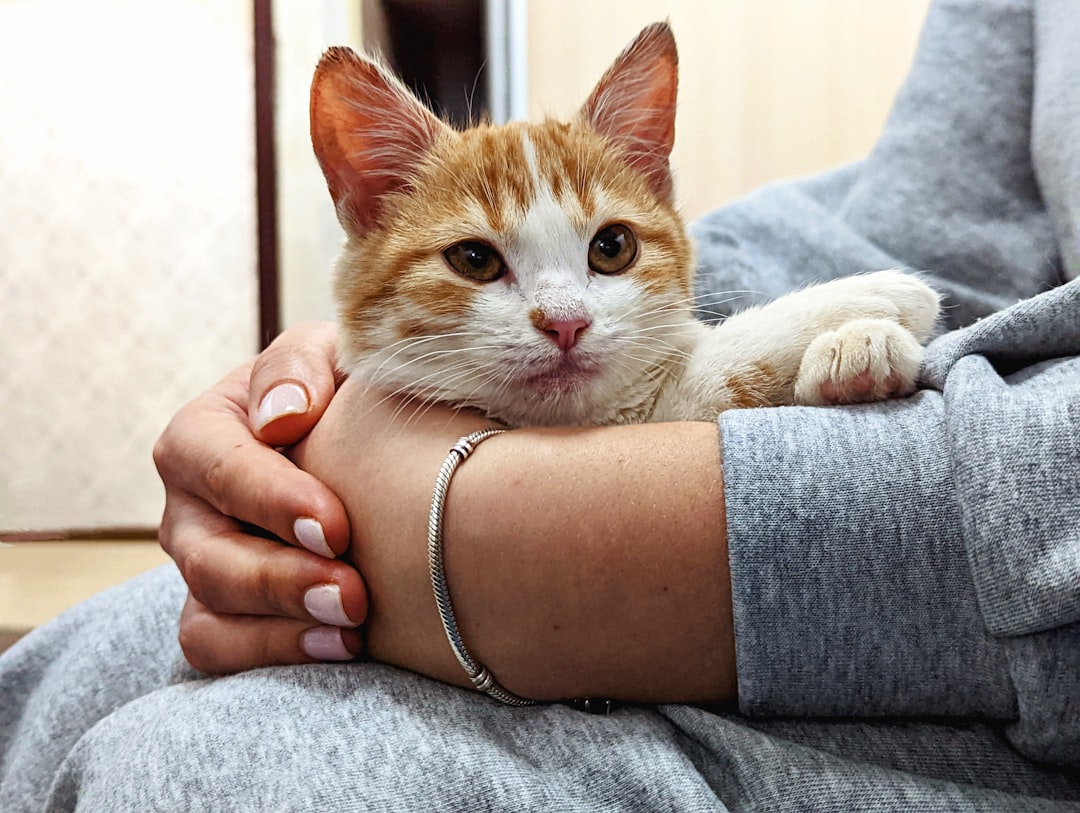Did you know that living with house cats can pose unexpected risks? While these furry pets are known for their cuteness and playfulness, their behavior and presence can sometimes bring on serious physical and health dangers. Whether you’re dealing with a cat attack, zoonotic disease, or erratic behavior, it’s important to stay informed and prepared. In this article, we’ll explore the potential risks of having house cats and provide tips for managing them effectively. Read on to learn more.

Introduction: The Surprising Risks Associated with House Cats
Living with a house cat can be one of life’s great joys. These fuzzy, four-legged friends are known for their playful personalities and cute antics. However, there are also potential risks associated with owning a house cat that many people may not be aware of. In fact, some of these risks can be quite serious and may even lead to fatalities. Before bringing a cat into your home, it’s important to understand the potential risks and how to manage them.
Here are some of the dangers associated with house cats that you should be aware of:
Physical Dangers: Cats are natural predators with sharp claws and teeth, and house cats are no exception. Even a playful swipe or nip can result in a painful scratch or bite. In some cases, cat bites and scratches can lead to serious infections or even cat scratch fever, a bacterial disease that can cause symptoms such as fever, fatigue, and swollen lymph nodes.
Zoonotic Diseases: Cats can also carry and transmit diseases to humans, such as toxoplasmosis, which is caused by a parasite called Toxoplasma gondii. This disease is particularly dangerous for pregnant women, as it can cause birth defects in their unborn babies. Other zoonotic diseases that can be transmitted by cats include rabies, ringworm, and salmonella.
Cat Behavior: While cats are generally known for their independent and aloof personalities, some cats may exhibit aggressive or erratic behavior. This can be particularly dangerous if the cat is a large breed or has a history of aggression.
Cat-Proofing Your Home: Another potential danger associated with house cats is the risk of injury from household hazards. For example, cats can accidentally ingest toxic plants or chemicals, get stuck in small spaces, or fall from high places. It’s important to cat-proof your home to prevent these types of accidents from happening.
Emergency Preparedness: In the event of an emergency, such as a natural disaster or a medical emergency, it’s important to have a plan in place for your cat’s safety and well-being. This may include knowing how to perform first aid on your cat, having emergency contact information for your veterinarian, and keeping a supply of food, water, and medication on hand.
By understanding the potential risks associated with house cats and taking steps to manage them, you can provide a safe and loving home for your feline friend.
Understanding the Physical Dangers of House Cats
House cats are beloved family members for many people, providing companionship, entertainment, and comfort. However, despite their cute and cuddly exterior, cats can pose physical dangers to those who live with them. Understanding these risks can help pet owners prioritize their safety and security, as well as the health and wellbeing of their feline companions.
One of the most obvious physical dangers of house cats is the risk of getting scratched or bitten. Even well-behaved cats may succumb to moments of aggression or defensive behavior, whether from fear, pain, or territorial instincts. Cat bites and scratches can cause painful wounds that may become infected if not properly treated. Additionally, some cats may carry bacteria in their mouths and claws that can lead to a condition called cat scratch fever or cat scratch disease, which can cause fever, fatigue, rashes, and swollen lymph nodes in humans.
Aside from injuries from bites and scratches, some cats may be prone to rough play or active behavior that can lead to accidental injuries for their owners or family members. For example, a cat might jump onto a person unexpectedly, causing them to trip or fall. Or, a cat might knock over a fragile object, causing it to shatter and potentially cause harm.
In addition to physical injuries, cat owners must also be aware of the risks associated with zoonotic diseases, or illnesses that can be transmitted from animals to humans. One of the most well-known zoonotic diseases associated with cats is toxoplasmosis, which is caused by a parasite called toxoplasma gondii that may be present in a cat’s feces. Pregnant women in particular must take care to avoid exposure to toxoplasmosis, as it can cause serious birth defects and complications.
To reduce the risks associated with living with house cats, it is important for pet owners to understand how to manage their feline companions’ behavior and environment. This may include investing in cat-proof furniture and household items, regularly cleaning and disinfecting litter boxes and other areas where cats may leave bodily fluids, and engaging in proper hygiene and sanitation practices when handling cats or cleaning up after them. It may also be helpful to seek out professional advice from veterinarians or animal behaviorists when dealing with aggressive or difficult-to-manage cats.
By being proactive and responsible, cat owners can minimize the potential physical risks associated with living with these beloved pets. Whether through careful cat-proofing, training and socialization, or proper emergency preparedness, cat owners can ensure that their relationship with their feline companions remains safe, happy, and healthy.
Exploring Zoonotic Diseases and Other Health Risks
Exploring Zoonotic Diseases and Other Health Risks
House cats have long been a fixture in many homes around the world. They are known for their independence, playfulness, and adorable looks, but some pet owners may be unaware of the potential health risks that come with living with a house cat. In this section, we will explore some of the zoonotic diseases and other health risks that pet owners should be aware of when considering or living with house cats.
Zoonotic diseases are infections that can be transmitted from animals to humans. House cats can carry some zoonotic diseases, such as toxoplasma gondii, which is a protozoan parasite that is usually transmitted through cat feces. People can become infected with toxoplasmosis by accidentally ingesting the parasite, by handling contaminated cat litter, or by eating raw or undercooked meat infected with the parasite. While toxoplasmosis usually causes mild to no symptoms in most people, it can be dangerous to pregnant women, newborns, and people with weakened immune systems.
Another common health risk associated with house cats is cat scratch disease. It is a bacterial infection that is mainly transmitted through a scratch or bite from an infected cat. It typically causes fever, fatigue, swollen lymph nodes, and skin lesions, which usually heal without complications. However, in rare cases, cat scratch disease can cause severe complications such as liver or spleen damage, eye infections, and nervous system problems.
Aside from zoonotic diseases, house cats can also pose some physical risks to their owners. Cat bites and scratches can cause serious injuries that require medical attention. According to the American Academy of Pediatrics, around 80% of cat bites become infected, which may lead to redness, swelling, and fever. Cat bites on the hand are particularly dangerous and can lead to tendon or nerve damage, and joint infections.
To minimize the risks associated with living with house cats, pet owners should maintain good hygiene practices, keep their pets healthy, and manage their pets’ behaviors. For instance, keeping cats indoors can prevent them from contracting diseases or inflicting injuries on humans or other animals. Pet owners should also ensure their cats are up-to-date on their vaccinations, sterilized, and treated regularly for fleas and other parasites.
To conclude, living with house cats can be a rewarding and enjoyable experience. However, pet owners should be aware of the potential health risks that come with pet ownership and take necessary precautions to ensure their safety and well-being. Being informed, prepared, and proactive can go a long way in preventing cat-related injuries and illnesses.
List of keywords used:
- house cats
- feline
- cat bites
- cat scratch disease
- toxoplasma gondii
- toxoplasmosis
- zoonotic diseases
- cat behavior
- cat aggression
- cat safety
- cat-proofing
- cat-proof furniture
- cat-proofing house
- cat-proofing garden
- cat hygiene
- cat health
- cat sterilization
- cat vaccination
- cat insurance
- cat emergency
- cat first aid
- cat cpr
- cat choking
- pet safety
- feline er
- feline first aid
- cat health risks
- cat scratches
- cat bite infections
- cat scratch disease symptoms
- cat hygiene practices
- pet safety measures.
Managing Aggressive or Erratic Behaviors in House Cats
For most people, house cats are beloved pets that bring joy and companionship into their homes. However, as with any animal, there are potential risks and dangers associated with owning a cat. One of the most significant risks is aggressive or erratic behavior, which can lead to injuries or even illness if left unchecked. In this section, we’ll explore some of the strategies and tips that can help you manage these behaviors and keep your household safe and happy.
First and foremost, it’s important to recognize that there are many factors that can contribute to aggressive or erratic behavior in cats. Some of these include genetics, breed, past experiences, and even underlying health conditions. In order to effectively manage these behaviors, it’s essential to identify the root cause and work with your veterinarian or a certified cat behaviorist to develop a tailored plan for your pet.
One common issue that can contribute to aggressive behavior in cats is a lack of proper socialization. If a cat has not been exposed to other cats or people during its critical socialization period (between two and nine weeks of age), it may develop fear or mistrust of unfamiliar individuals or animals. To help reduce the risk of aggression in these situations, it’s important to gradually expose your cat to new people, animals, and environments in a positive and controlled manner.
Another common issue with aggressive cats is redirected aggression. This occurs when a cat becomes agitated or aroused by one stimulus (such as a bird outside the window) and then redirects that aggression onto a nearby person or animal. To reduce the risk of redirected aggression, it’s important to limit your cat’s exposure to potential triggers (such as keeping them away from windows or outdoor areas where birds may be present) and to provide plenty of mental and physical stimulation to help channel their energy in positive ways.
Of course, not all aggressive behavior in cats is related to fear or redirection. Some cats may exhibit aggressive behaviors due to territorial or dominance issues, or may simply have a more assertive or assertive personality. In these cases, it’s important to work with a certified cat behaviorist or veterinarian to develop a comprehensive plan for managing these behaviors. This may include training exercises, behavior modification techniques, and even medication in some cases.
In addition to managing aggressive behaviors, it’s also important to keep your cats safe and secure in your home. This may involve cat-proofing your home and garden to prevent escape or injury, selecting cat-proof furniture and accessories to avoid destructive behavior, and keeping your cat’s environment clean and hygienic to reduce the risk of zoonotic diseases such as toxoplasmosis.
In summary, while there are potential risks associated with living with house cats, with proper management and planning, it is possible to enjoy a happy and healthy relationship with your feline friends. By working with qualified professionals, identifying and addressing aggressive behaviors, and taking steps to ensure your cat’s safety and security, you can create a welcoming and fulfilling environment for both you and your pet.
Cat-Proofing Your Home for Better Safety and Security
One of the most important things to consider when deciding to bring a house cat into your home is how to keep them safe and secure. While cats are generally good at navigating their way through their environment, they can still find themselves in dangerous situations. In this section, we’ll explore some tips for cat-proofing your home to keep your feline friend out of harm’s way.
Secure your windows and doors
Cats are known for their agility and ability to climb, and open windows and doors can present a danger if your cat falls out or gets out unexpectedly. Consider installing window screens and ensuring that doors leading outside have secure locks.Keep hazardous materials out of reach
Cat-proofing your home means keeping your cat safe from potential health hazards. Keep chemicals, cleaning products, and other hazardous materials stored in cabinets or closets that are inaccessible to your cat.Create a safe zone
Cats need a space to call their own, and providing a designated area for them can reduce stress and keep them out of harm’s way. Consider creating a cat-friendly room, where your cat can have its bedding, toys, and other essentials.Protect your furniture and home decor
Cats are notorious for scratching furniture and knocking over home decor items. Consider investing in cat-proof furniture and securing any decorative items that could fall over and injure your cat.Keep your cat away from dangerous areas
There are some areas of the home that are inherently dangerous for cats, such as the kitchen and bathroom. Keep your cat away from potential harm by keeping those areas off-limits or installing baby gates to block entry.
Overall, cat-proofing your home is an essential step in providing a safe and secure environment for your feline friend. By taking these simple steps, you can reduce the risks associated with living with house cats and enjoy a happy and healthy relationship with your furry companion.
Staying Prepared for Emergencies: First Aid Training for Cats
Cat owners know that unexpected situations may occur with their pets. Even house cats, typically known for being docile and low-maintenance, can occasionally get into accidents or experience health emergencies. In the event that your furry friend needs immediate medical attention, being prepared with cat first aid knowledge can make all the difference.
One of the most common emergencies that cat owners may encounter is choking. When a cat is choking, you may notice behaviors such as choking sounds, gagging, and drooling. If you suspect that your cat is choking, there are several steps that you can take to ensure their safety. First, attempt to carefully remove any visible objects from their mouth. If this does not work, place your hands under their chest and give quick, vigorous thrusts. If the object does not dislodge, contact your veterinarian or an emergency feline first aid provider.
Another emergency that cat owners may face is injury due to outdoor exposure. Whether a feline is exploring the neighborhood or spending time in the garden with you, it is essential to be aware of potential hazards such as toxic plants or other animals. If your cat suffers from a severe cut or wound from a bite or scratch, clean the wound as quickly as possible, apply pressure to the area, and contact a veterinarian or feline emergency room if necessary.
Finally, cat owners should be aware of the signs and symptoms of feline cardiac arrest. Symptoms may include pale gums, shallow breathing, and loss of consciousness. If you notice any of these behaviors, it is crucial to perform CPR immediately. You can also seek guidance from your veterinarian on the correct techniques.
Staying prepared for emergencies also means ensuring that you have the necessary supplies nearby. Keep a well-stocked first aid kit in your home, including items like gauze, bandages, and cleaning solution. Consider investing in cat insurance and prioritize preventive care, such as regular checkups and vaccinations, to optimize your pet’s wellness.
In summary, accidents happen and your feline friend may require immediate medical attention in certain cases. By staying prepared and knowing how to manage different emergency situations, cat owners can ensure their pet receives the best possible care.
Conclusion: Navigating the Complexities of Living with House Cats
Overall, living with a house cat can be a truly rewarding experience for many people. However, it is important to recognize that owning a cat also comes with certain potential risks that should not be ignored. By staying informed and taking the necessary precautions, you can help ensure that you and your furry friend enjoy many happy and healthy years together.
Here are some key takeaways to keep in mind when it comes to living with house cats:
- Be aware of the physical dangers associated with cats, including bites and scratches that can lead to infections or diseases.
- Understand the risks of zoonotic illnesses and take steps to prevent transmission of diseases like toxoplasmosis.
- If your cat exhibits aggressive or erratic behaviors, seek help from a professional or experienced cat behaviorist.
- Take steps to cat-proof your home and outdoor spaces for optimal safety and security.
- Consider investing in emergency first aid training for cats in case of accidents or health emergencies.
By following these guidelines and educating yourself about potential risks, you can enjoy a happy and healthy relationship with your feline companion for years to come. Don’t be afraid to seek help or advice if you are ever uncertain about the best way to care for your cat. With the right knowledge and precautions, you can enjoy all of the benefits of living with a house cat while minimizing any potential risks or complications.














